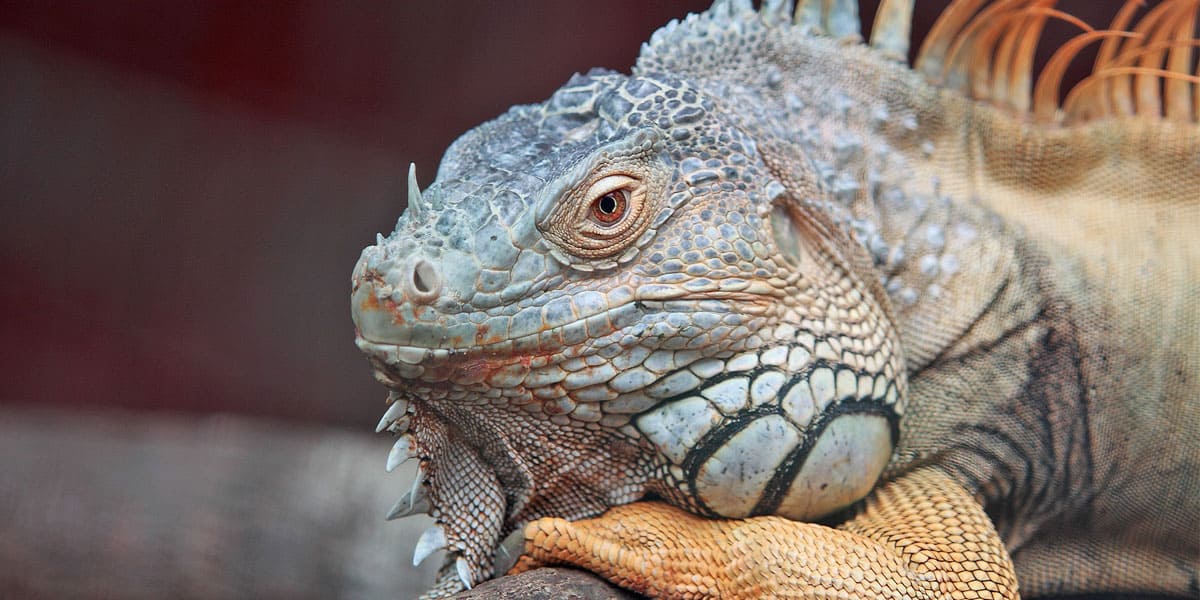Where do you need to worry about falling iguanas the most? Anywhere there are trees, you may find iguanas taking shelter in the branches–and falling when things get too chilly.
To be more specific, you’re most likely to find iguanas in areas where they can find easy access to a food source. The question is, what is the iguana diet? What plants do wild iguanas like to munch on and what plants act as a repellent rather than an attraction?
Read on to learn more about which plants are eaten by iguanas and which plants iguanas hate. If you find that you’re growing an iguana buffet in your yard, you’ll know when it may be time to call in iguana control.
What Kind of Iguanas Are We Dealing With In South East and West Florida?
Which iguanas are causing a problem for the residents of South East and West Florida? Florida has long held a deep investment in the exotic pet trade, which led to an increase in the population of an invasive species of green iguanas.
Green iguanas are not native to Florida, but the subtropical climate suits their physical needs. Over the years, these green iguanas were unwisely released into the wild, where they were able to reproduce in large numbers. In addition to green iguanas, you may also encounter the invasive Mexican spiny-tailed iguana and the black spiny-tailed iguana.
All three of these invasive species are considered large iguanas. Green iguanas can grow up to 17 inches from snout to tail, while the Mexican spiny-tailed iguana can grow up to 18 inches. The black spiny-tailed iguana can grow up to five feet in length, although it is unlikely that you’ll encounter one of that size in Florida.
What Is the Iguana Diet?
Iguanas are considered primarily herbivores, meaning that the bulk of their diet consists of plant matter. In fact, these lizards can survive off of plant matter, alone. The question is, what plants do they love to eat and what plants do they hate?
Keep reading to find out more about the basic iguana diet.
Plants That Iguanas Love to Munch On
Iguanas are particularly fond of most fruits and flowers as well as new growth that is tender and non-toxic. This encompasses many of the native plants you’ll find in Florida as well as edible or aesthetic plants that many home gardeners love to grow. The list of plants iguanas eat includes:
- Bougainvillea
- Hong Kong orchid trees
- Standard orchids
- Nasturtium
- Hibiscus and roselle
- Impatiens
- Pink pentas
- Purple queen
- Roses
- Squash
- Melons
- Vegetable greens (ie leafy greens such as lettuce as well as the greens produced by most vegetable plants such as carrots, potatoes, and more)
If you or a nearby neighbor are growing any of the above plants, you may be more likely to encounter iguanas in surrounding trees. Iguanas spend the majority of their time in trees, coming down to mate, eat, and relocate to a more hospitable tree. That means that they like to make sure that they have a steady source of food (and water) close to their tree of choice.
Plants That Iguanas Don’t Seem to Touch
There are plants that iguanas feast upon and, of course, plants that we’ve never seen iguanas touch. If you’re tired of spending time in the garden just to find that it’s been torn up by wild iguanas, you may want to try planting some of these varieties this year:
- Cordyline australis
- Chenille
- Ixora Taiwanensis
- Croton
- Mexican petunia
- Oleander
- Silver buttonwood
- Lilyturf
- Society Garlic
- Citrus trees
- Milkweed
- Most plants with foliage that is thick and tough
Many of these plants are just as bright and beautiful as the ones you’ll find on the list of plants that iguanas do enjoy eating, so you won’t have to sacrifice your colorful yard to make it more iguana-resistant!
Should You Change Up What You’re Growing In Your Yard?
Now that you’ve studied up on the iguana diet, you’re probably thinking about some of the plants growing in your own yard. If you’re growing a variety of plants in the iguana diet, should you change things up?
The reality is that iguanas are resourceful creatures. Growing iguana-resistant plants only could encourage them to move on to new pastures, but it’s not a guarantee. It is possible that they may adapt to the new layout and start eating the plants they once hated.
Plus, ceasing to grow fruits and vegetables simply isn’t an option for some home gardeners. If you want to maintain your fruit and vegetable garden, the best approach is to do what you can to keep iguanas out.
Consider using raised beds with chicken wire cages or move your edible garden into a small greenhouse. Both of these options will allow your crops to continue growing without depriving them of the resources they need while keeping hungry iguanas at bay.
Iguana Problem? Give Us a Call
The iguanas we tend to run into trouble with in Florida are invasive species. Florida provides the right climate for these iguanas to thrive, while many of us unknowingly provide them with a steady source of food. By understanding the iguana diet, you can take control of your yard and start making it a little less hospitable for these invasive creatures.
At the end of the day, it can be difficult to discourage iguana habitation in or around your yard. If you have an iguana problem, we’re here to help. Contact us today to receive a free estimate for the best iguana control services in South East and West Florida.


